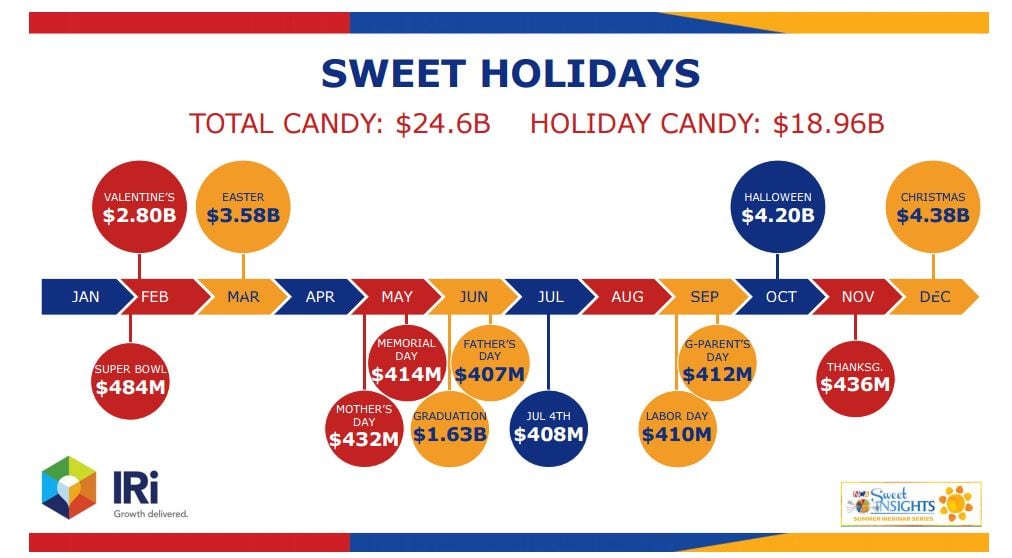The market research body was speaking during the recent National Confectioners Association’s summer webinar, Activating Seasons Beyond Seasons.
The $24.6bn candy category grows at 1.6% year-over-year, which is "quite flat" and slower than the overall CPG growth (2.1%), said IRI’s executive vice president and practice leader, Larry Levin, during the webinar.
Selling beyond four major holidays
Candy sales in the US reach its peak at these four particular “sweet holidays,” including Valentine’s Day, Easter, Halloween and Christmas, according to Levin.
These holidays together make up about $15bn sales in total, he said.
“But if you take a closer look at those micro holidays [including Super Bowl, Mother’s Day, Memorial Day, Graduation, Father’s Day, Fourth of July, Labor Day, Grandparent’s Day, and Thanksgiving], there’s a lot of opportunity to continue to drive the passion and fun that confectionery brings to us.”

Final week of the holidays should not be understated
Levin highlighted the confectionery sales during the six weeks leading up to Valentine’s Day this year during the webinar. It declined by 2.3% compared to last year to $2.8bn.
IRI estimated that there were about 573 confectionery items on average selling at each store every week during the six weeks before February 14th, 2016. However, data shows that during the final week ending on the Valentine’s Day, the average number of items swelled to 655.
“It’s apparent that it’s a trend across these holidays: There are more items coming in during the final week compared to the overall six-week period,” Levin said.
This trend, he added, also resonates with other major sweet holidays.
“The importance of that final week should not be understated because 25% of the total sales for Valentine’s Day, $767.4m, occurred during that week.”
Leverage millennials through multicultural holidays
To engage Millennials with confectionery products it is important for the industry to understand the culture in which Millennials have grown up, Levin said.
“We all know [a lot of] Millennials are linked to Hispanic culture, and Mexican culture is a big part of it,” he said. “Cinco de Mayo could be a great secondary holiday [for confectionery businesses] to appeal to Hispanics and Millennial Hispanics in particular.”
In the US, 75% of the total population is Caucasian, but only 60% of the Millennial population is Caucasian, he said. The candy industry needs to migrate itself to appeal to those cultural groups during their holidays in order to get them involved, he concluded.
